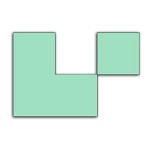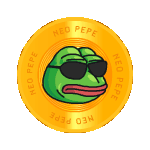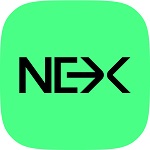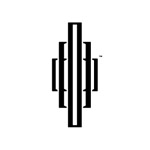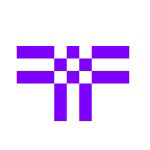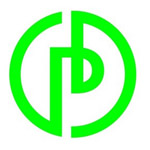Overview
|
What is Units.Network
Units Network: Modular Infrastructure with L0 Scalability and Restaking for Consensus.The network uses restaking to power its consensus mechanism, allowing tokens to be staked while still staying liquid, which makes the system more efficient and flexible. With Units Network, launching a blockchain doesn’t require deep technical knowledge — its DAO-powered builder makes it easy for anyone to create and manage their own chain.DetailsIEO (Gate Launchpad): Nov 03, 2024 - Nov 05, 2024Token supply: 100,000,000 UNIT0 Total tokens for sale: 250,000 UNIT0 LegalRegistration year: 2023 | Token infoTicker: UNIT0Type: Utility-token Token price in USD: 1 UNIT0 = 0.12 USD Token distribution: Private - 8% Public - 7% Waves Community - 10% DAO - 10% Marketing - 15% Community Incentives - 5% Eco - 20% Liquidity - 15% Core contributors & Advisors - 10% |
Units.Network Roadmap
The launch of the first Unit0 network brings order and stability to the world of Layer2 blockchains. The mining token of the Unit0 network is distributed to early adopters, allowing them to receive Unit0 tokens.Unit0 is the inaugural network within the Units Ecosystem. The Unit0 token will also serve as the governance token for the entire ecosystem.
To acquire the Unit0 token, one must stake L2MP, the mining token of the Unit0 network, with one of the nodes of the foundational Layer 1 blockchain. L2MP is being distributed through a series of community airdrops intended to bootstrap liquidity within the Units ecosystem.
The Unit0 token becomes the governance token of the Units ecosystem DAO. Unit0 holders are onboarded to become DAO members and get to decide on the allocation of the DAO treasury funds.
The Units Ecosystem DAO is founded on the Unit0 token, with its treasury acquiring 10% of the total Unit0 supply. To gain voting rights and access benefits from new token launches supported by the DAO's treasury funds, Unit0 tokens can be staked within the DAO. This staking mechanism enables participants to actively engage in the governance of the ecosystem and reap rewards from the inception of new projects facilitated by the DAO's financial resources.
The first projects launch on Unit0, providing token incentives for Units DAO participants and receiving rewards from the DAO for achieving predetermined milestones.
New projects launching on the Unit0 network have the opportunity to apply for grants from the Units DAO, in exchange for allocating a portion of their project tokens to the DAO's treasury. Unit0 holders who participate in the DAO governance are eligible to receive allocations of these tokens. The grants awarded to the projects are contingent upon achieving specific milestones and are designed to promote further liquidity bootstrapping within the ecosystem. This milestone-based approach ensures that funding is allocated efficiently and that projects contribute to the overall growth and stability of the ecosystem.
The second chain (Unit1) launches in the ecosystem, bootstrapped by the Ecosystem DAO. The Unit1 chain provides rewards to Unit0 holders who participate in the DAO, continuing the Chain of Incentives.
After the successful deployment of new protocols and projects on the Unit0 network, the ecosystem is poised for further expansion with the introduction of additional networks, starting with Unit1. The selection and endorsement of the Unit1 network will be guided by the DAO, with a particular emphasis on its capacity to highlight the ecosystem's robustness and deliver advantages to the Ecosystem DAO. This strategic initiative is designed to perpetuate the Chain of Incentives, establishing a sustainable incentivization framework that could serve as a model for subsequent network launches. This approach not only fosters growth within the ecosystem but also ensures a consistent and strategic expansion that benefits all stakeholders involved.
Zero-knowledge technology enhances the network with cutting-edge interchain communication mechanisms and allows for the launch of new chains based on different ZK approaches.
The Units network introduces a novel mechanism aimed at enhancing decentralization and security across all networks within the ecosystem, known as Decentralized Sequencing. This mechanism can be seamlessly integrated with existing Zero Knowledge frameworks, enabling the separation of Consensus and Execution Layers. Such integration significantly improves decentralization across all Layer2 networks. By leveraging Decentralized Sequencing alongside Zero Knowledge technologies, the Units network sets a new standard in achieving more robust and efficient decentralized systems, ensuring greater integrity and scalability within the blockchain ecosystem.
An update of the foundational Layer 1 blockchain will enhance the capacity of the ecosystem as a whole, allowing hundreds of new connected chains to emerge.
Once the ecosystem of interconnected networks is successfully bootstrapped and established, the next strategic step involves updating the foundational Layer1 chain. This update is crucial for enhancing the overall capacity of the ecosystem. By upgrading the foundational Layer1 chain, the ecosystem can accommodate increased demand, introduce new features, and improve scalability and security, thereby ensuring the long-term sustainability and efficiency of the entire network infrastructure.
All the ecosystem blockchains become shards of one global network based on the Foundational Blockchain, with trustless instant interaction between them.
With the update, the Layer 1 chain evolves into the Beacon chain for the entire ecosystem, leveraging Zero-Knowledge (ZK) technology to facilitate interactions across all networks. This transformation enables the bootstrapping of new networks at the consensus level of the Beacon chain. As a result, all networks within the ecosystem can interact in a completely trustless and instantaneous manner. This advanced interconnectivity opens up possibilities for innovative applications, such as interchain flash loans, enhancing the functionality and efficiency of cross-chain operations and contributing to a more integrated and dynamic blockchain ecosystem.
Project team











